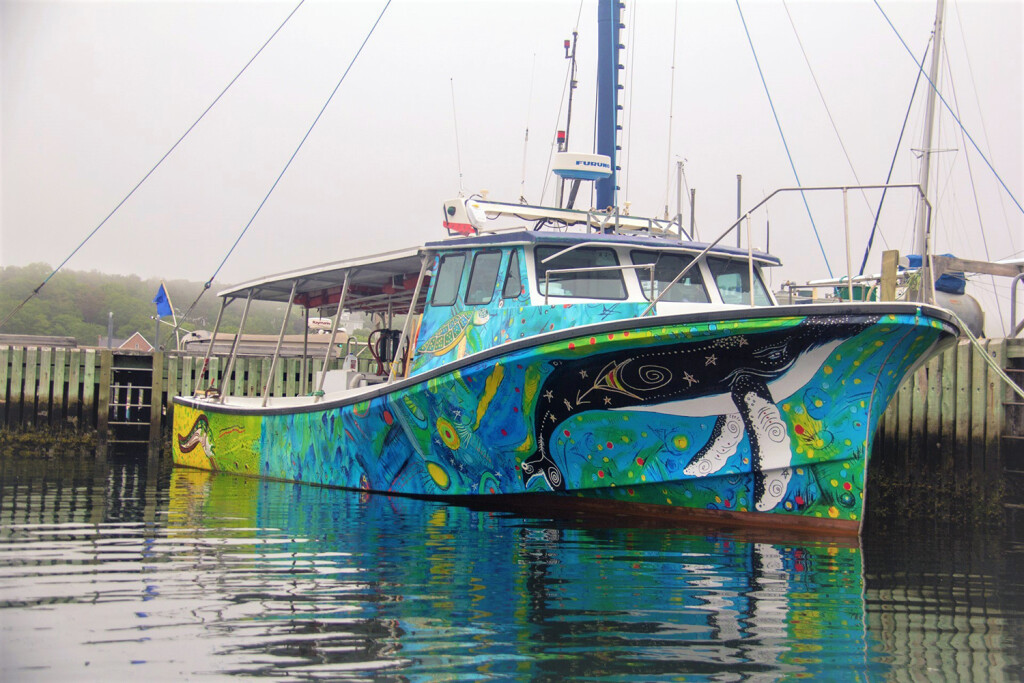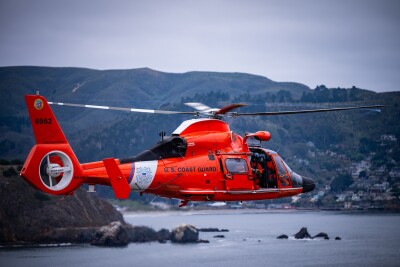Hybrid and full electric power are lively topics in the boatbuilding industry, not just for commercial fishing vessels, but tugboats, ferries and other workboats, and recreational boats, as well.
“We are not getting requests from the fishing industry,” says Will Ayers of the Elliot Bay Design Group, naval architects in Seattle. “I think fishermen, wisely, are letting other industries do the R&D before they adopt hybrid power.” According to Ayers, Elliot Bay is deep into designing hybrid and electric ferries that can be charged in between runs. “I can see where very coastal fisheries could use it, but the boats I’m looking at from my office all go up to Alaska.”
Ayers is right, while some big trawlers are using hybrid power in various applications, it is smaller, nearshore vessels that are looking more closely at the potential of hybrid power.
Boatbuilder Sam Devlin, in Olympia, Wash., recently built a 27-foot stitch-and-glue solar powered vessel, the Wayward Sun, that made it from Bellingham, Wash., to Glacier Bay, Alaska, in 170 hours. “The big thing with this is a proof of concept,” says Devlin. “The technology works.”
The crew made the trip “using the sun as the only power source in an area known more for cloudy skies and rain than bright sunny days,” said a press release from Devlin Designing Boatbuilders. “On the roof were 12 flexible Solbian solar panels, providing a total of 1,730 watts of power. Torqeedo was of great help with the voyage, providing the Cruise 4.0 pod drive, and the six Torqeedo 24-3500 lithium batteries.”
But Devlin notes there are issues that will slow fishermen from adopting the technology. “Some trollers have flirted with it,” he says. “But the design uses pods with little 14-inch plastic composite wheels. Fishing kind of forces you to go to a conventional shaft and propeller.”
Devlin also notes that the solar panels take up more space than a fishing vessel can spare. But while fishing vessels may not be able to go full solar, they could easily go hybrid.
“Most have gensets and batteries. It’s not a big reach to get bigger batteries,” says Devlin, who believes he could build those vessels. He has built boats up to 65 feet using a stitch-and-glue system of basically sewing plywood panels together and sealing them with West System epoxy. “I think wood and epoxy construction could suit the fishing industry,” says Devlin. “Especially the trolling fleet.”
Devlin points out that his stitch-and-glue vessels might be ideal for hybrid power. “The biggest thing is they can’t have heavy burdensome hulls, but you have to have to able to bolt the engine down securely, because with electric engines you get full torque.”
Devlin’s boats might fit those requirements, but he points out another limiting factor: the price tag. You have to do the math. The Torqeedo 24-volt, 3,500-watt batteries are $2,999 each, he says.
According to Devlin, if the fuel savings over 10 years will exceed the cost of going hybrid, it’s a no brainer. “I’m surprised there’s not more interest,” he says. But there is increasing action in and out of the fishing industry that could lead to more fishermen looking at hybrid vessels, and designers meeting their needs.
Among the innovators, Sue Molloy, president of Glas Ocean Electric, built a hybrid lobster boat in Nova Scotia, and is currently designing a full electric production boat for the aquaculture industry. “Electric and hybrid development is about to explode,” says Molloy.
The key to that explosion is battery technology, according to Molloy. “The general feeling I have is that there is not much movement in power density, which is around 12 to 15 kWh per 100 kilograms. Where the progress is is in battery life.” Molloy points out that a team at Dalhousie University in Halifax, Nova Scotia, had been working with Tesla and developed a million-mile battery that could make its way onto fishing vessels.
Another battery maker that Molloy likes is the SPBES, Sterling Plan B Energy Systems. With its main office in Vancouver, British Columbia, SPBES has offices in seven other countries, including the United States. SPBES builds high-capacity, liquid-cooled batteries.
“The transition to battery hybrid and battery electric propulsion is already occurring in the marine industry,” says SPBES. The company notes that what started with hybrid and electric ferries is now spreading across the maritime industry — including hybrid fishing boats.
According to the company, Plan B energy storage systems are capable of providing greater performance and smaller systems without compromising the safety and the longevity of the system. “The systems are adaptive to cell chemistry and currently include High Power NMC, Energy NMC and LTO Titanate configurations. With advances such as CellSwap, CellCool and E-Vent, Plan B energy storage systems are known as the most optimized and safest high power systems on the market,” says SPBES.
“They offer cooling and venting,” says Molloy. “They are a battery company that wants you to succeed.”
Battery cooling has proven important for some innovators. One Alaska longliner, gillnetter Fabian Grutter, has reported frying his homemade hybrid system earlier this year, as a result of charge control problems.
Without the resources of the multinationals, Grutter had his batteries custom built in China. But he has also considered the potential of used Tesla batteries that may have a lot of life left in them.
One of the places SPBES is focusing its attention is the use of hybrid power for vessels using dynamic positioning systems.
“A workboat, such as an offshore supply vessel or cable layer, uses a dynamic positioning system to hold position relative to the rig despite wind, waves and currents. The vessel is able to respond to variations in load (wind and waves) as they happen, on battery power alone,” says the company. Fishing vessels hauling longlines, gillnets and other gear, also use a dynamic positioning system — the person at the helm, — but the power needs are similar, and hybrid designers are developing turnkey systems for small vessels.
Besides the Torqeedo system that took the Wayward Sun from Washington to Alaska, Transfluid, a company based in Italy, is working with some Sitka fishermen who received carbon reduction grant money to help convert to hybrid power.
Transfluid offers industrial-scale systems, developed in different sizes, from 8 up to 75 kW of electric power — 10 to 100 hp — enough to for most small vessels to hold position and run hydraulics while hauling gear.
Transfluid sells turnkey systems, with electric motors, transmissions, LiFePo4 batteries, electronic management and control systems, and a global assistance network. The LiFePo4 batteries are based on lithium (Li), iron (Fe), phosphate (Po) cells, a technology with an integrated battery management system to maintain the cells to be equalized and efficient. Transfluid batteries boast a 3,000-cycle lifespan, and fast charging to increase the daily available energy.
These are just few of the increasing number of players in the hybrid electric system providers for fishing vessels.
While many of the new developments are coming from other industries, fishermen are, as Will Ayers notes, wisely allowing others to bear the R&D costs and picking up the technology when numbers make it a smart business decision.







